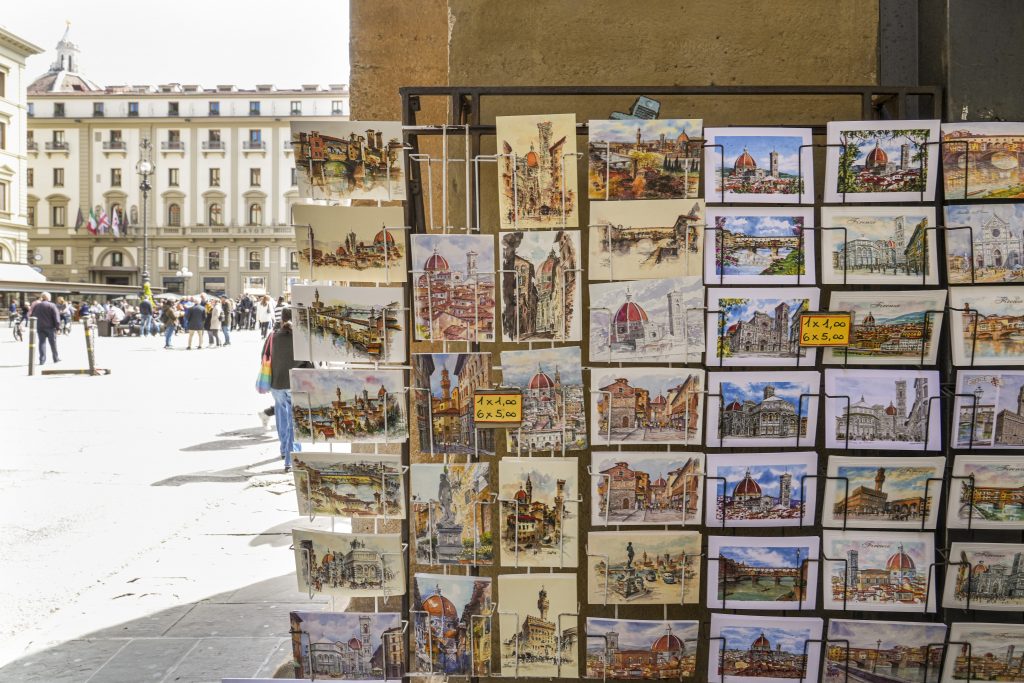Once a fixture in Italian daily life, the edicola (newsstand) battles to remain relevant in the face of our dependence on digital devices. These once-ubiquitous kiosks are now more frequently used for the purchase of a bus ticket (also at risk, given the recently installed card machines on board buses and trams) with photocopying and telephone top-ups offered as other services. Personally, I pick up the odd packet of Pokémon cards and issues of Topolino for my son, perusing the ever-fewer magazines and newspapers on display while worrying about the fate of these cultural and community hallmarks.

The beginning of newsstands lies somewhere in the 19th century, and their resistance through to today speaks volumes about their ability to stave off the various threats to their existence, surviving wars and now facing perhaps the greatest of them all, the digital revolution. The role played in the community, however, is something that simply cannot be replaced by a screen. The chat with the edicolante is the start to someone’s day and, as a colleague nostalgically enthused, “my trusted local newsagent watched me grow up”. From the purchases of figurines in childhood to the popular magazines in adolescence and the daily newspaper as an adult, a newsagent provides words to accompany each stage of your life, with the tactile appeal of print maintaining its fans, regardless of the speed with which technology drives ahead. In order not to be relegated to a remnant of the past, the convenience, choice and trust of a local edicola are treasures to preserve, and a regular paper purchase is a small measure to take to ensure the future of these beloved stalls.

In an article published by ANSA, it was reported that there are currently around 12,000 edicole still standing in Italy, almost half of which are dedicated to purposes other than the sale of newspapers and magazines. Twenty-five per cent of Italian towns are without any whatsoever, a far cry from the important role they played in days gone by, when a morning stroll to pick up the paper was a staple, besides a chat with those on the same errand about the headlines, followed by a cappuccino and flick through the pages in a nearby bar or circolo (community club). This idyllic scenario is still repeated by those bound to this pleasant routine, but unfamiliar to the majority whose devices are the fount of all information.
12,000 edicole in Italy
25% of Tuscan towns have no newsstands
The plan: 70% of newspaper stands in Florence city centre must display newspapers and magazines
A quick walk around Florence city centre shows the reappropriation of some stands as tourist ticket vendors, with ATM machines slotted into the sides, with others morphing ever more into the sale of souvenirs, a sign of both their situation in sightseeing hotspots and the waning interest in print. A recent plan emerged from the Palazzo Vecchio that strives to support the stands. The idea is that 70 per cent of newspaper stands in the UNESCO World Heritage site area must be dedicated to the display of newspapers and related publishing products, with no more than 30 per cent displaying other goods in an attempt to encourage edicole as a point of reference in the community, with a recommendation for 15 new kiosks in parks and gardens committed to the purveying of food and drink. Kiosks outside the UNESCO area would be permitted to sell one side of the kiosk for advertising in order to sustain their livelihoods.
Upon pondering the matter further, I decided to take a walk one lunchtime to our nearest merchant. The weather chose at that moment to take a dramatic turn and the skies opened in an almighty rainstorm. The vendor diligently and methodically packed away the papers, only to put them back out a short time later when the sun reemerged. It moved me to make a purchase, appreciative as he ran to the back to pull out a tightly rolled copy of the issue of the magazine I’d requested, making the content infinitely more enjoyable for having experienced this snippet of dedication. A click on a device could never have been as satisfying. Undoubtedly, the instantaneity of a never-ending scrolling session has its function, but I’m hard-pressed to be convinced that it beats the informative and social role of a newsstand.













